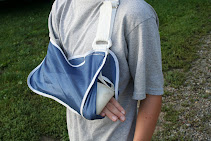Get cash for a new car, save the environment and aid the ailing auto industry – this was a powerful package which has proven to be difficult to resist as Americans have flocked to their auto dealers to make use of the government’s clunkers rebate.
While obviously, it was President Barack Obama who drove the “Cash for Clunkers” car purchase program or Car Allowance Rebate System forward, the budget to replenish its dwindling funds now rests on the hands of the Senate.
Early on, the initial budget of the program which was $1 billion dollars has been close to depleted by Tuesday’s record $664 million worth of transactions as Americans clearly embraced the program.
The popular program, which provides buyers of new cars and trucks rebates of $3,500 to $4,500, has allowed about a quarter-million to buy new cars at time when consumer spending is low and the economy is still in recession.
However, while the US Senate has vocalized it would approve of the additional $2 billion budget, the White House had warned that Clunkers could come to an abrupt halt on Friday if the Senate didn't pass the House bill before their August recess.
The additional $2 billion will come from an economic stimulus account that had been set aside to subsidize renewable energy and is expected to support the program all the way to September.
According to the National Highway Traffic Safety Administration, most consumers are buying smaller, more fuel efficient vehicles under the program. Top picks are Honda Civics, Toyota Corollas and Dodge Calibers.
Ford credited the clunkers program for its sales which rose to 2.4 percent in July, its first year-over increase since November 2007.
Aside from more fuel efficient cars and the economic boost, clunkers would also be beneficial for many motorists who were then unable to replace their old and often, malfunctioning cars.
Age and poor maintenance can take a toll on vehicle safety and performance and this can contribute to car accidents because of vehicle condition or equipment failure.
Take for example, older model SUVs with a high rollover incidence rating. A fiery rollover accident which killed five people in Mission Viejo involved an older model of a Chevrolet Tracker. Some drivers and their families stick it out with the dangerous vehicles because they can’t afford to buy a new car.
Sure, Republicans are grumbling over the costs but in the long-run, cash for clunkers will not only save the environment and the lives of so many people – it can also save the government a ton of cash.
According to the U.S. Department of Transportation, the total societal cost of motor vehicle crashes exceeds $200 billion annually.
Now that’s enough to drive everybody else to support cash for clunkers.
While obviously, it was President Barack Obama who drove the “Cash for Clunkers” car purchase program or Car Allowance Rebate System forward, the budget to replenish its dwindling funds now rests on the hands of the Senate.
Early on, the initial budget of the program which was $1 billion dollars has been close to depleted by Tuesday’s record $664 million worth of transactions as Americans clearly embraced the program.
The popular program, which provides buyers of new cars and trucks rebates of $3,500 to $4,500, has allowed about a quarter-million to buy new cars at time when consumer spending is low and the economy is still in recession.
However, while the US Senate has vocalized it would approve of the additional $2 billion budget, the White House had warned that Clunkers could come to an abrupt halt on Friday if the Senate didn't pass the House bill before their August recess.
The additional $2 billion will come from an economic stimulus account that had been set aside to subsidize renewable energy and is expected to support the program all the way to September.
According to the National Highway Traffic Safety Administration, most consumers are buying smaller, more fuel efficient vehicles under the program. Top picks are Honda Civics, Toyota Corollas and Dodge Calibers.
Ford credited the clunkers program for its sales which rose to 2.4 percent in July, its first year-over increase since November 2007.
Aside from more fuel efficient cars and the economic boost, clunkers would also be beneficial for many motorists who were then unable to replace their old and often, malfunctioning cars.
Age and poor maintenance can take a toll on vehicle safety and performance and this can contribute to car accidents because of vehicle condition or equipment failure.
Take for example, older model SUVs with a high rollover incidence rating. A fiery rollover accident which killed five people in Mission Viejo involved an older model of a Chevrolet Tracker. Some drivers and their families stick it out with the dangerous vehicles because they can’t afford to buy a new car.
Sure, Republicans are grumbling over the costs but in the long-run, cash for clunkers will not only save the environment and the lives of so many people – it can also save the government a ton of cash.
According to the U.S. Department of Transportation, the total societal cost of motor vehicle crashes exceeds $200 billion annually.
Now that’s enough to drive everybody else to support cash for clunkers.






